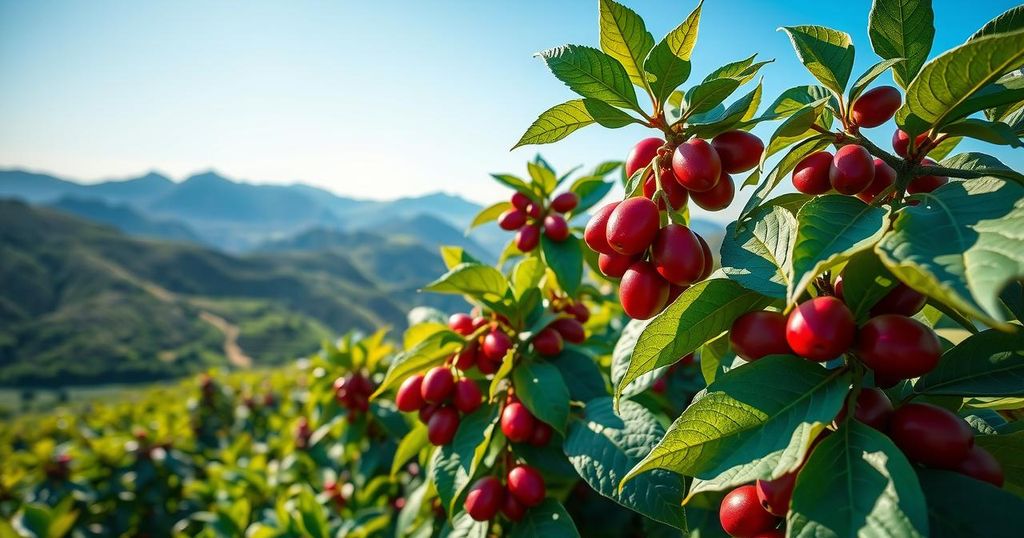Coffee prices have surged, with arabica and robusta reaching recent highs due to below-average rainfall in Brazil, affecting coffee yields. The decline in inventories and high pre-sales further support price increases. Brazil’s coffee production estimates have been revised downward, raising concerns of future supply shortages amidst ongoing drought conditions in key growing regions.
Coffee prices have seen notable increases, with May arabica coffee rising by 2.16% to reach a 1-1/2 week high. Concurrently, robusta coffee has also gained 2.21%, hitting a 1-week high. The upward trend is primarily attributed to subpar rainfall in Brazil, particularly impacting coffee yields in the key growing region of Minas Gerais, which received only 24% of its average rainfall last week due to delays caused by the Brazilian Carnival holiday.
The decline in inventories strengthens coffee prices further, as ICE-reported robusta stocks fell to a two-month low of 4,247 lots. Similarly, arabica inventory experienced a dip to a 9-1/4 month low before recovering to a one-week high of 809,128 bags. A more significant portion of the coffee harvest has been pre-sold compared to previous years, intensifying supply concerns and contributing to price escalation.
Additionally, Brazilian green coffee exports decreased by 1.6% year-over-year in January, indicating potential supply constraints. Recent forecasts by Conab predict a 4.4% reduction in Brazil’s coffee crop for 2025/26, marking a three-year low, amidst worries over prolonged drought conditions affecting coffee plantations.
El Niño-related dry weather has persisted since last April, damaging coffee trees during crucial growth stages. Evidence suggests Brazil is experiencing its driest conditions since 1981. Colombia, the second-largest arabica producer, continues to recover from last year’s drought as rainfall remains below normal.
Robusta coffee prices remain supported by decreased production levels in Vietnam, where a drought contributed to a 20% reduction in the 2023/24 crop year. Although the USDA projects a slight decline in Vietnam’s robusta production for the upcoming 2024/25 season, there are hopes for a production recovery.
Despite an anticipated increase in global coffee exports, recent figures reveal a year-over-year decline, compounded by slower Vietnamese export rates. The USDA remains optimistic about overall world coffee production rising in the 2024/25 year, but significantly reduced Brazilian stock levels highlight ongoing supply challenges.
In summary, the current increase in coffee prices is driven by reduced rainfall in Brazil, shrinking inventories, and significant pre-sales of coffee harvests. Prolonged dry weather and concerns over production levels, particularly in Brazil and Vietnam, further bolster these prices. Despite expectations for increased global coffee exports, potential shortages loom, suggesting continued volatility in the market.
Original Source: www.tradingview.com






